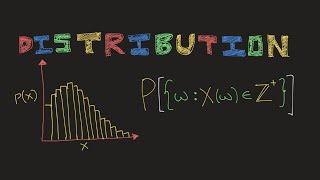Smooth functions | Articles containing proofs | Functional analysis | Generalizations of the derivative | Generalized functions
Distribution (mathematics)
Distributions, also known as Schwartz distributions or generalized functions, are objects that generalize the classical notion of functions in mathematical analysis. Distributions make it possible to differentiate functions whose derivatives do not exist in the classical sense. In particular, any locally integrable function has a distributional derivative. Distributions are widely used in the theory of partial differential equations, where it may be easier to establish the existence of distributional solutions than classical solutions, or where appropriate classical solutions may not exist. Distributions are also important in physics and engineering where many problems naturally lead to differential equations whose solutions or initial conditions are singular, such as the Dirac delta function. A function is normally thought of as acting on the points in the function domain by "sending" a point in its domain to the point Instead of acting on points, distribution theory reinterprets functions such as as acting on test functions in a certain way. In applications to physics and engineering, test functions are usually infinitely differentiable complex-valued (or real-valued) functions with compact support that are defined on some given non-empty open subset . (Bump functions are examples of test functions.) The set of all such test functions forms a vector space that is denoted by or Most commonly encountered functions, including all continuous maps if using can be canonically reinterpreted as acting via "integration against a test function." Explicitly, this means that "acts on" a test function by "sending" it to the number which is often denoted by This new action of is a scalar-valued map, denoted by whose domain is the space of test functions This functional turns out to have the two defining properties of what is known as a distribution on : it is linear and also continuous when is given a certain topology called the canonical LF topology. The action of this distribution on a test function can be interpreted as a weighted average of the distribution on the support of the test function, even if the values of the distribution at a single point are not well-defined. Distributions like that arise from functions in this way are prototypical examples of distributions, but many cannot be defined by integration against any function. Examples of the latter include the Dirac delta function and distributions defined to act by integration of test functions against certain measures. It is nonetheless still possible to down to a simpler family of related distributions that do arise via such actions of integration. More generally, a distribution on is by definition a linear functional on that is continuous when is given a topology called the canonical LF topology. This leads to the space of (all) distributions on , usually denoted by (note the prime), which by definition is the space of all distributions on (that is, it is the continuous dual space of ); it is these distributions that are the main focus of this article. Definitions of the appropriate topologies on spaces of test functions and distributions are given in the article on spaces of test functions and distributions. This article is primarily concerned with the definition of distributions, together with their properties and some important examples. (Wikipedia).




















